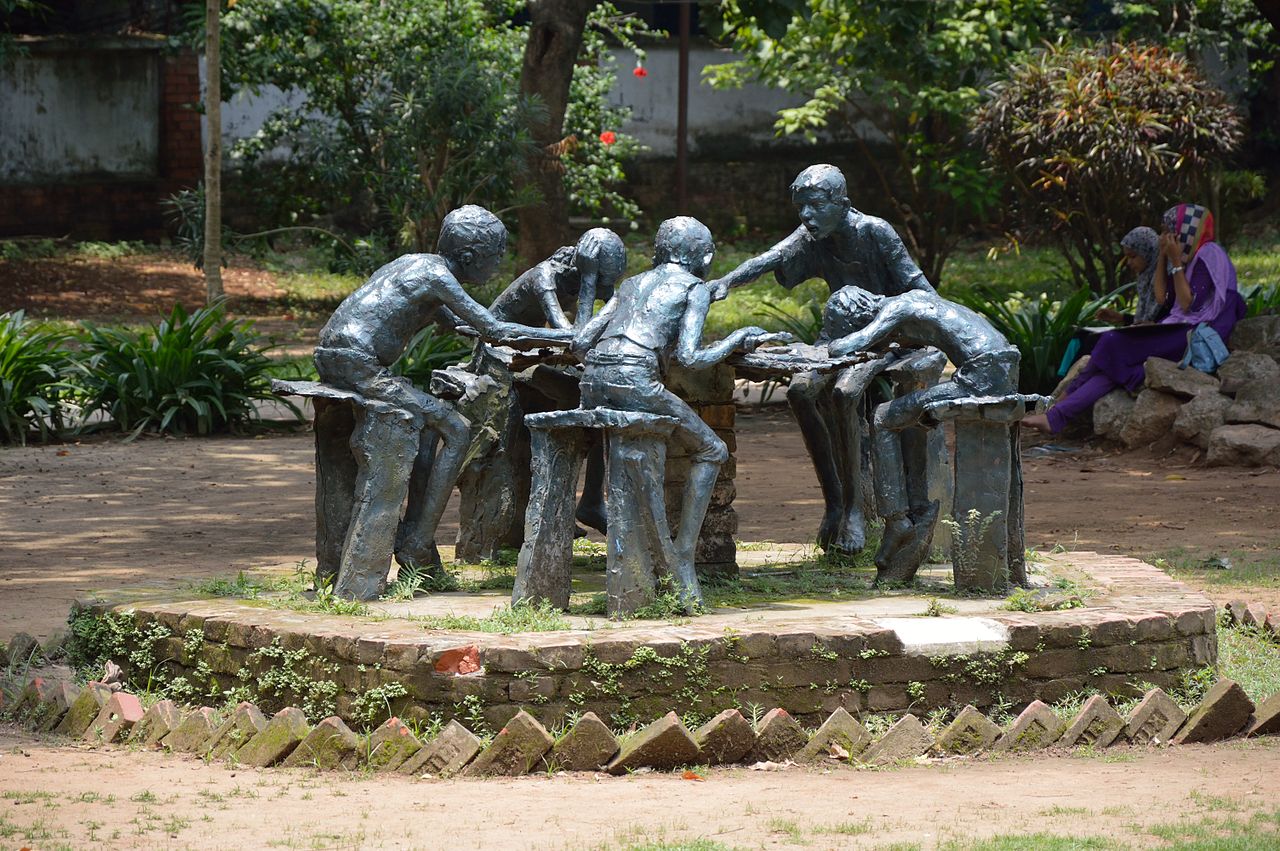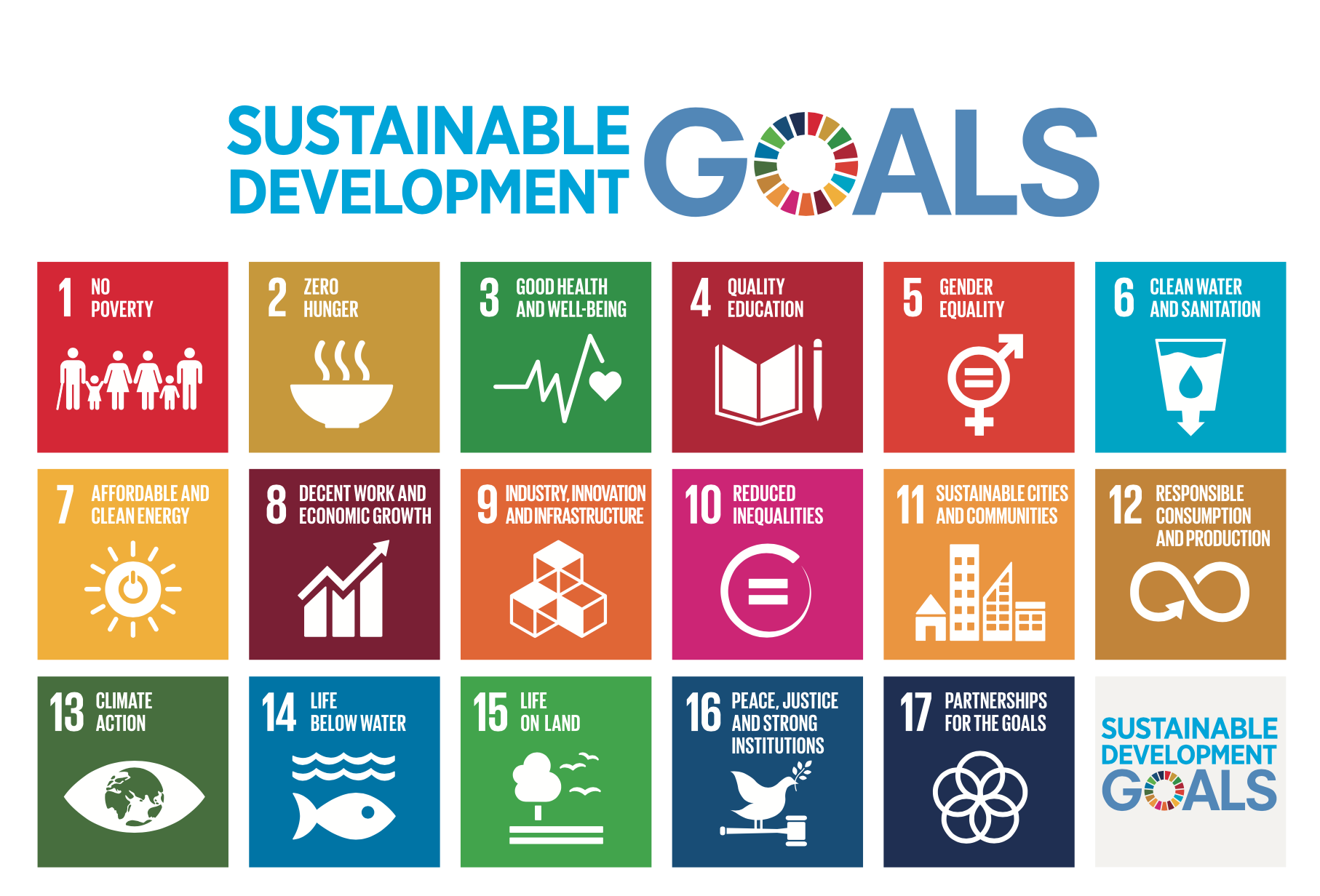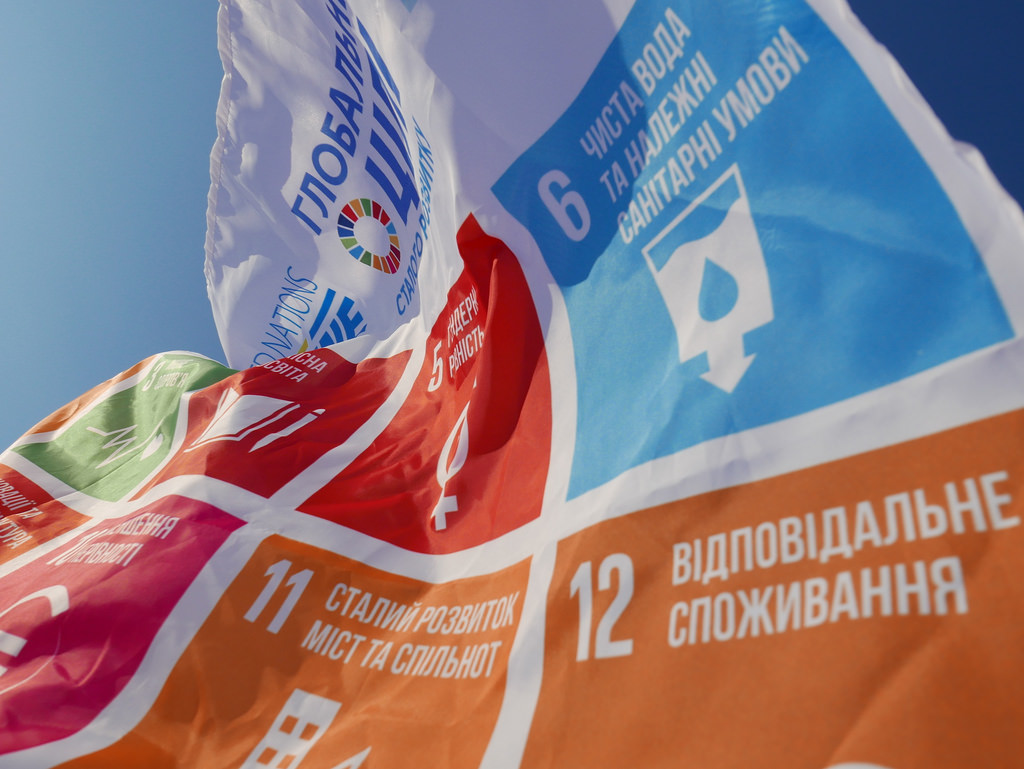Welcome to the third Alliance Audio.
This is the latest in a new series debating key issues in philanthropy with guests from across the foundation world.
In this podcast Alliance editor Charles Keidan hosts a discussion with Dr Joanna Macrae, Director of European Partnerships at GiveDirectly; Dilhani Wijeyesekera, Strategic Lead on building stronger communities at Comic Relief; and Ben Morton Wright, President and Group CEO of Global Philanthropic.
This podcast explores philanthropy’s involvement with international development and the Sustainable Development Goals. The SDGs, as they’re known, are a set of 17 goals on health, education, hunger, poverty and climate among others, adopted by the United Nations to guide member states development global development policies to 2030.
The OECD estimates that $6.5 billion of philanthropy goes to SDGs each year. But that’s a fraction of overall philanthropic dollars and the global aid budget. Should more be given, and where? And are the SDGs the best framework for philanthropy in any case?
Transcript:
CHARLES:
Welcome to Alliance Audio.
I am Charles Keidan, editor of Alliance magazine, the magazine and website which specializes in global philanthropy.
We have a simple mission: to give philanthropy the attention and scrutiny it deserves to help it do the most good.
Today, we’re exploring philanthropy’s involvement with international development and sustainable development goals.
The SDGs as they’re known, are a set of 17 goals of health, education, hunger, poverty, and climate change, among a number of others, adopted by the United Nations to guide member states’ global development policies.
To the advocates, SDGs are a real improvement on the Millennium Development Goals which they succeed. Critically, they enable philanthropy foundations to have a seat at the table and give them new opportunities to get involved.
Philanthropy-backed partnerships, such as the SDG philanthropy platform, and initiatives such as the OECD’s NetFWD are driving philanthropy’s engagement with SDGs. Indeed, the estimates that approximately $6.5 billion dollars of philanthropy goes to the SDGs each year, but that’s a fraction of overall philanthropic giving and the global aid budget.
So should more be given to international development and are the SDGs the best framework for philanthropy? What about other approaches, such as giving directly to the world’s poorest through cash transfers?
So, to discuss the topic, I am delighted to be joined by three guests with extensive experience in these areas: Joanna Macrae, the former official at the United Kingdom’s Department for International Development, now head of European partnerships at GiveDirectly, who have pioneered cash transfers to the poor—I should also add that GiveDirectly and its current founder, Micheal Faye, are featured in our latest issue, so do check this out if you like what you’ve heard today. Welcome, Joanna.
JOANNA:
Nice to be here, thanks, Charles.
CHARLES:
I am also joined by Dilhani Wijeyesekera from Comic Relief, a major funder of international development causes, will be well known to many of our listeners. Hello, Dilhani.
DILHANI:
Hi there.
CHARLES:
And, last but not least, we will be joined by Ben Morton Wright, founder and CEO of Global Philanthropic Consultancy, which advises foundations on the international development funding and works closely with BOND, an umbrella body for international development organizations. Hello, Ben.
BEN:
Hi, there.
CHARLES:
Ben, if I could start with you, can philanthropy be more involved in international development? What could be done to make sure that there is sustainable philanthropic involvement?
BEN:
Yes, it can, and it should be, and it has been. I think we’ve seen a really interesting decade, where private individuals have started to set the agenda in global issues and Gates is no exception to that.
And I think we’re moving to a phase where that sort of benchmark has been followed, so, particularly for ultra high net individuals around the world, looking at international development, looking at some of the issues that developed and these seventeen goals is something that they will look at and I think they will direct philanthropic acitvity to try and achieve and alleviate some of the issues and set up with these goals.
CHARLES:
And would you say in working with your clients’ engagement with the SDGs as a framework to guide the global development spending?
BEN:
Yeah, I mean, it’s early days, really, isn’t it? It’s just last year, so with the Millennium Development Goals, we saw organizations like the UN Foundation use those, and Ted Turner and his work many decades ago. And to actually set their parameters of what they did were highly effective in terms of the outcomes they were looking for.
So I think, you know, certainly, the Millennium Development Goals proved that there was real value in setting objectives, and I think the widening the objectives and being detailed is a good thing. I think it will help philanthropists.
CHARLES:
Joanna, if I can turn to you, your impressions of philanthropy? You’re new to the philanthropy field, but you’re very much a veteran of the humanitarian development field. What’s your impressions about philanthropy’s engagement with intellectual development?
JOANNA:
Yes, thanks Charles. I think there are two really big things that philanthropists can do and really complement the more formal government aid.
I think the first is that philanthropists have got a voice within public policy and, Gates Foundation, for example, I think has been very active in defending aid budget, but it’s also been very active in protecting particular causes such as sexual reproductive health.
And I think philanthropists can do and say things, though it’s sometimes quite difficult for governments to say and do. So for example, when I look at GiveDirectly and I think we could not have got where we are today without the kind of venture philanthropists that we see in places like Silicon Valley, so Google and good ventures were incredibly important in that they could take risks in terms of where they use funding, which would be very tough for any government to do.
So I think there’s that kind of public policy and innovation role for philanthropists. Also they’re adding to the size of the pot. So although the amounts are relatively small compared to the overall size of official aid, they’re not insignificant sums, there’s real addition in the two.
CHARLES:
And you work, Joanna, on the question of cash transfers, this relatively new innovation. Can you say a bit more about cash transfers and you mentioned that some funders, particularly in Silicon Valley, have got behind the idea, but there are still a relatively small amount of philanthropists. So what are your thoughts about the future in relation to cash transfers?
JOANNA:
So I think what’s interesting about cash transfers is it provides a way of delivering aid very directly to poor people, and in some ways, it seems quite counter-intuitive that we should just give people money.
But what’s interesting is that there’s a growing evidence base that—just doing that—just giving people cash and letting them decide how to deliver on their development priorities is not only very effective—so we’re seeing a lot of this evidence around impact—but it’s also a very efficient way of transferring aid.
I think the other really interesting thing about just giving people cash is that it’s a way of, sort of, empowering people, so it’s them rather than aid agencies making decisions about what’s important to them. So I think cash has got a real potential to transform the way we think about aid, to increase its effectiveness, to increase its efficiency, and also to really be changing the power relationship, I suppose, between the philanthropists and agencies.
CHARLES:
Thank you. Dilhani, SDGs and Comic Relief—Comic Relief a well-known international development funder is to UK business; how does Comic Relief think about the SDGs?
DILHANI:
Well I think, we think about them a lot, so it’s very much informed Comic Relief’s current strategy, and it provides a framework for the work that we do. But I would sort of say that we would see them more as a steer, than a comprehensive framework or set of parameters for what we do.

Opening up a space for free discussion. Sculpture: ‘Serious Discussion’ by Tejosh Halder at the University of Dhaka.
And so kind of building on what Joanna was saying, we might also look for spaces where we can invest in a way that might give attention to issues that aren’t currently on the agenda, whether that’s ways of working in development so new approaches like cash transfers and we work with GiveDirectly as well.
Or whether it’s particular issues that have been missed, so for example, Comic Relief has been a long-term investor in looking at mental health, way before it was a popular subject, way before it was a feature of the SDGs or any other development frameworks.
And it’s the same with slum-dwellers’ rights; we will really try to play a role that blends between the international frameworks that give us the guidance for what we do, but also trying to be responsive to what we learn from civil society, what we learn from citizens and communities about issues that impact them.
CHARLES:
So how will Comic Relief bring on cash transfers as part of its agenda? To what extent has that emerged in the last year or so?
DILHANI:
Yeah, that’s a great question. It’s actually something we’re absolutely thinking about but I think what we would say is we’re not an expert on delivering cash transfers.
There are great organizations that are emerging like GiveDirectly with expertise, and what we would rather do is invest in them and their system, and see where we can contribute and add value, and we are – maybe Joanna can help say a little bit more about this; we try to do is look for where we can offer ‘additionality’ and adopt early. It’s a promising idea, and I think that’s what we’re trying to do with these guys.
JOANNA:
Yeah, I mean that’s absolutely the role that Comic Relief is able to play so we had a kernel of an idea that we came up to you when it was quite young and you provided us both the space to develop that idea and the early investment that then has allowed us to attract other support. It is a great example of how a private philanthropy organization can help to drive innovation.
CHARLES:
And yeah, the SDGs and cash transfers don’t always seem to be natural at fundraising. Michael Faye has recently referred to them as ‘a laundry list largely reflective of the silent nature of the sector’, as he described it.
So you can see that’s a good example of an NGO working with one another. Do you see cash transfers as disruptive to the kind of current understanding of the way that international development philanthropy can work?
DILHANI:
Yes, I think it is. I think it’s disruptive in a number of different ways. I think it’s disruptive in a way of how we think about philanthropy—so I think sometimes we think that, to do good in the world is really important that we don’t just give people a handout but kind of enabling them to climb up the ladder, and we think that we have to have a lot of people to mediate doing good and to help tell people how to make their lives better.
And I think part of what cash does, is it transforms that relationship between the philanthropists and the end user and it’s around changing the power dynamic and putting the end user in charge of their own aid and in their own charitable action.
I think the other thing is that it has quite the implications in terms of the charitable ecosystem because, actually it’s a very simple way of doing good, and you don’t actually need some of these institutions doing so much, and so I think what we’re beginning to see on the humanitarian sector is a real streamlining of the overall architecture.
And if that goes to its logical conclusion I think you can see a small number of charities and their time will be decreasing.
CHARLES:
Ben, let’s put that to you. You’re working with philanthropists, working with wealthy individuals or their foundations that want to do good in the world and are involved in global development.
Do you see— do they come to you asking for advice about how to deploy their capital and would something like cash transfers be on the agenda? Do they say ‘we’d like to be involved in the SDGs’ or a particular SDG? What kind of conversations have you been having?
BEN:
Yeah, I mean the SDGs are really helpful because they give you a yardstick, if you’re into international development, and into changing the world through your philanthropy, make a scale; very large gifts are very helpful. I think the cash transfer clearly works and is a great initiative and I think, in a way, it’s also inevitable.
I mean, technology, most of our big wonderful charities around the world are post-war, most of them are U.N. related and they’ve been doing things a certain way for a long time, in reality the world is just changing so quickly around us there are new channels, there are new ways of dealing with emergencies, there’s new ways of dealing with philanthropy and in actual fact, hasn’t invested itself quite yet fully, I don’t think, so all that’s yet to happen in people’s world in terms of social media and just how they live in the next generations and as they’re all coming through, it’s just a very different world, and so I think there’s going to be huge adjustments around how we look at transferring money from private individuals through to needy individuals and I think in a way, what we’ve seen is just the early stages of the inevitable changes that will happen.
CHARLES:
To what extent do you think there is international development charities that may be on the receiving end of significant funding from the philanthropists who work for the foundation you work for— to what extent are they ready for this adjustment which will have implications for the size, scale operations?
BEN:
Yeah, I think that’s a very interesting question, and it’s hard because it’s so fast-moving. And so, I think, as far as the philanthropist is concerned, what they’re looking for is leverage, of impact, they’re looking for efficiency. I think, well in terms of they look at their giving in terms of a business matrix in many ways.
They get a lot of pleasure out of it, and they should do. So, the other part of this is that there’s a huge move yet to happen, there’s a massive transfer of wealth that’s yet to happen, and given what we see at the moment, you know generally around a certain GDP, it wouldn’t be that difficult to get it up to US standards at 2 per cent, if you unlocked this transfer of wealth, that’s a UK stat, but generally in Europe it’s around 1 per cent, to double giving actually, if you unlock this transfer for private foundations through planned giving, through structured philanthropic work, you could through that actually get significant impact in the actual total amount of money and into the charitable sector, let alone what could be done for development.
CHARLES:
Well one thing I think probably all of us around the table would have us wish would be to see more funding go to international development, we were talking before we came on air about the different areas that donors might give to, so given these changes might be on the way, how can increases in philanthropy be generated for international development?
DILHANI:
Yeah, I think one way is by reassuring people that their money means well and I think that one of the things that holds people back from a lot of international giving is the degree of skepticism about that it is doing good.
So I think one of the things we need to do is get out there, be really clear that this type of giving can make a really transformative effect on the lives of poor people. And I think the other thing is crowding in the younger generation, then refer to millennials, who I think actually are very driven by social purpose a lot of the time, and it’s how can we find innovative ways of engaging them and making them feel that they’re part of delivering on the vision.
CHARLES:
Coming back to your first comment, isn’t there a paradox?
Actually cash transfers seem to have a very strong evidence base in terms of their effectiveness, actually there might be a deception that giving cash is somehow— could be wasteful, or putting money in the hands of people who won’t use it well.
So, is it necessarily obvious or logical that actually money will flow into the most effective charities and how do you deal with that dilemma?
DILHANI:
So I think part of the that way we deal with it is by really being on the front foot in terms of engaging with the public, around the evidence, the stories, and I think it requires everyone within the sector more broadly to be thinking about trying to engage their supporters and encouraging them to think “is there evidence around what we’re doing?” and “can we be transparent about the cost?” and I think if we can do that, it will cross the sector and that becomes discipline in all of our giving, big and small.
That will start to change the culture, and that would mean when people do look at the evidence, when they do look at the cost, they will see that interventions like cash do offer very good value for money, they are giving a high level of effect. So there’s a kind of big piece in here around educating, doing these things.
CHARLES:
Coming to that, Dilhani, Comic Relief obviously engages with donors and the wider public, large amounts of individual giving.
But much of the way you raise funds isn’t necessarily exactly educational in that, from what I can tell, there’s the ‘comic’ side of Comic Relief, you’re using comedy and celebrity to drive funding, even if at the same time you want to make sure you’re having impact on the programme. So how do you deal with that dilemma, that tension?
DILHANI:
Yeah, that’s a great question. I thinks it’s really a tension for the organization, it’s something that we talk about a lot. We’ve got a new CEO now and we’re going through the processes and thinking about what does Comic Relief really want to be, what do we stand for over the next five to ten years, what are the things that we really care about, and see this sort of— I would say there’s about 97 per cent awareness of Comic Relief in the UK which is huge.
And we are a household brand and we absolutely see it as our responsibility to not only raise funds in order to get investment to the people living in poverty, but also to support that narrative to move forward, and so we’re very much thinking about how do we engage the public in understanding issues in a very human and simple way.
And sometimes that’s going to think about how to use comedy and fun to make it simple and engaging. Also particularly we’re thinking very much about the next generation, thinking about young people who are really passionate about justice issues and maybe want to engage in a different way, who aren’t ready yet to be fundraisers, but who are ready to be mobilisers and talkers, be advocates for change.
So I think it’s a sort of live discussion and for us within the organization, I think we might even see next year a different way of how we tell the story and engage with the story.
CHARLES:
Well, something we’ll certainly at Alliance be looking out for next year.
Ben, if we can turn to you, that question, the increased engagement with impact among some of the donors that you work with, at the same time, donors can be motivated by recognition, by naming the certain grants they make. How much do you see a mixture of motivations informing giving, how much to you see a genuine commitment to impact amongst the people you’re working with?
BEN:
Well, I mean, giving is all about not getting anything back in return; fundamentally, philanthropy is all about giving love of humankind and supporting the initiatives or people, or countries, or programs, whatever it might be. So impact is secondary, but the point is that I think philanthropists need to obviously see high programmes.
They want to see people monitor it, they want to see people evaluating that, and it’s very important that that’s built in to their work, and it’s very important that they feel that their hard-earned cash, in a way, is well used.
So, impact shouldn’t be the ‘tail that wags the dog’, fundamentally we’re talking about philanthropy, but on the other hand, now I think we’ve got a sophisticated emergence, of a very sophisticated philanthropic, certainly the top-level community, they do want to look at impact and they do want to see that the money they’ve spent and given is actually well spent and it has the right impact.
I do think on a final point, you can spend as much money on measuring the impact as giving the gift, so you’ve got to be careful on this; it should all be relative and fit for purpose. I think we can get a bit too carried away with just constantly looking at the impact.
Giving gifts should be a pleasurable experiences. It’s a transaction that, in theory, you’ll not get anything back, but it’s just a form of measurement.
CHARLES:
Joanna, does that reassure you that potentially more donors will shift to cash, based on the evidence base that you’ve been able to develop?
JOANNA:
Yeah, and I think this combination of head and heart that drives philanthropy and I think what we like to see is maybe a little bit more head in some philanthropic decisions.
I think we’re quite encouraged that there is a generation of philanthropists, some of who haven’t given before, so for example we work very closely with Founder’s Pledge and we’re seeing, I think, that type of organization bringing in a new generation of people who haven’t necessarily got a long history and who are being driven, quite hard I think, by concerns around impact as well as feel-good factors, so I think we feel that there is a generation of donors that’s emerging that’s got impact very much at the heart of their decision making.
DILHANI:
Yeah, I was just going to add to that; I suppose one of the things that I’m really interested to see emerge within this space, and I suppose it sits more on the impact side than the philanthropy side, is how do models like cash begin to, kind of, integrate with system approaches that see different kinds of social change, which might not be about property, but might be more about justice issues and, so, one of the things I was thinking about on the on the way here is a platform like GiveDirectly, which has technology behind it to actually talk to and voice issues from huge numbers of people.
How could that also be the way for people to advocate to talk about their rights, to talk about issues within the community that might not be about cash itself? So, for example one of the organizations we work with does a lot of work around using CitySpec, which is a mobile app to allow communities and citizens to talk directly to local authorities. It reaches around 25,000 residents just through a single text message that says “are water taps in your community working?” and it turns out that only 44 per cent of them are.
And so there’s a whole piece around voicing accountability that technology offers, that these sort of routes are starting to build that speak to, sort of, broader social change and human rights issues that, I think many philanthropists and many organizations like Comic Relief think about.
I think one of the things I wouldn’t want us to ‘throw out of the basket’, is this idea that there are many different routes to change, and there are ways in which these new approaches both disrupt but kind of say complement the framework.
CHARLES:
In which case it seems to be that lots of change not just for international development causes, but for philanthropy are driven by technology. And I think on that note, that’s all we have time for on this particular topic at this moment, but we will be returning to these issues at Alliance.
We would like to thank our guests today on Alliance Audio; Ben Morton Wright, Global Philanthropic; Joanna Macrae, GiveDirectly; and Dilhani Wijeyesekera, Comic Relief. Thank you to you all, and also to our listeners.
To read the latest on philanthropy where you are, go to alliancemagazine.org and subscribe. Your subscription enables Alliance to hold up a mirror to philanthropy and we hope you enjoy the view.
Until next time, thank you and goodbye.
—
Production – Kathryn Murrell, Alliance’s Communications Officer
Transcription – Jacob Beck, Alliance’s editorial intern
For further reading on the debate, see Dr Joanna Macrae‘s February 2017 article for Alliance ‘Why philanthropy should make cash transfers to the poor‘.















Comments (0)